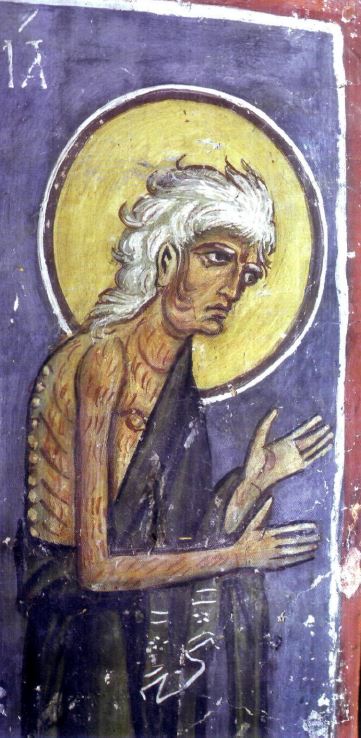L’afirmació del gènere en l’Art Bizantí a través de Santa Maria d’Egipte
DOI:
https://doi.org/10.56349/emblecat.240Paraules clau:
Maria d'Egipte, bizantina, gènere, masculí, femení, santedat, beateria, anacoretaResum
Els cicles pictòrics bizantins de les esglésies segueixen un simbolisme teològic estricte i ben planificat. No tothom pot ser pintor, ni un pintor pot pintar allò que li vingui de gust. Tot i això, l'ortodòxia es qüestiona amb figures paradigmàtiques com Maria d'Egipte: una santa dona representada a Bizanci com qualsevol altre sant anacoreta home. La seva figura transmet qüestions de gènere i santedat, subvertint la idea errònia del binarisme catòlic, que sembla que l'ortodòxia desmuntar amb Maria d'Egipte. Encara que la legitimitat de la seva figura està en dubte, Maria d'Egipte és un important objecte d'estudi tant amb finalitats artístiques com socials. Com afirma Jeannete Lindblom, «fins i tot les vides de sants purament ficticis revelen molt sobre la societat, la religió, la cultura, etc., i sobre la història social i política de l'època».Descàrregues
Referències
Betancourt, R. (2020), Byzantine intersectionality: sexuality, gender, and race in the Middle Ages. Princeton University Press, Princeton, Nova Jersey. DOI: https://doi.org/10.1515/9780691210889
Bynum, C. (1991), Fragmention and Redemption: Essays on Gender and the Human Body in Medieval Religion. Nova York: Zone Books.
Bynum, C. (1987), Holy Feast and Holy Fast : The Religious Significance of Food to Medieval Women. University of California Press, Berkeley.
Bynum, C. (1982), Jesus as Mother: studies in the spirituality of the High Middle Ages. University of California Press, Berkeley.
Dumitrescu, I. (2018), “Desire: The Life of St Mary of Egypt”. A The Experience of Education in Anglo-Saxon Literature, editat per Irina Dumtriscu, 129-156. Cambridge University Press, Cambridge.
Franco, L. (2021), “Byzantine Lives: Discussing Nonbinary Sexuality, Gender and Race in Byzantium”, Harvard Theological Review 114 (4), p. 561-570. DOI: https://doi.org/10.1017/S001781602100033X
Jantzen, Grace M. (1995), Power, Gender and Christian Mysticism. Cambridge University Press, Cambridge.
Karras, R. (2017), Sexuality in Medieval Europe: doing unto others. New York Routledge, Londres. DOI: https://doi.org/10.4324/9781315269719
Lidov, A. (1991), The Mural Paintings of Akhtala. Nauka Publishers, Moscou.
Lindbblom, J. (2019), Women and públic space. Social codes and female presence in the Byzantine urban society of the 6th to the 8th centuries. Universitat de Helsinki: Helsinki, tesi doctoral.
Maguire, H. (1996), The Icons of Their Bodies: Saints and Their Images in Byzantium. Princeton University Press, Princeton, Nova Jersey.
Neville, L. (2019), Byzantine Gender. Amsterdam University Press, Amsterdam. DOI: https://doi.org/10.1515/9781641890175
Palacio, M. (2004), “¿Qué tiene para decirle M. Foucault al Cristianismo? Prólogo a una genealogia de genero de la moral sexual cristiana”, Pensamiento 60 (228). p. 413-422.
Purpura, A. (2020), “Innovating “traditional Women’s Roles: Byzantine Insights For Orthodox Christian Gender Discourse”, Modern Theology 36 (3). p. 641-661. DOI: https://doi.org/10.1111/moth.12538
Tatarchenko, S. (2012), “(trad.) Comunión de la Venerable María de Egipto» en la pintura monumental bizantina”, Vestnik PSTGU, Serie V 1 (7). p. 24–50.
Sofroni. Vie de Sainte Marie Égyptienne pénitente / par Sophrone. Suivie de Vie de Saint Syméon Stylite / par Théodoret de Cyr (trad. Arnauld d'Andilly), Montbonnot-St. Martin: Jérôme Millon, 1985.
Waldstein, M., Wisse, F. (eds.) (1995), The Apocryphon of John : synopsis of Nag Hammadi codices II,1; III,1; and IV,1 with BG 8502,2. Brill Publishers, Leiden. DOI: https://doi.org/10.1163/9789004439658_002
Watt, D. i Lees, C. (2011), “Age and Desire in the Old English Life of St Mary of Egypt: A Queerer Time and Place?”. A Middle-Aged Women in the Middle Ages, editat per Sue Niebryzdowski, 53-67. Woodbridge, Suffolk: D. S, Brewer. DOI: https://doi.org/10.1017/9781846157936.005

Descàrregues
Publicades
Com citar
Número
Secció
Llicència
Drets d'autor (c) 2025 EMBLECAT, Estudis de la Imatge, Art i Societat

Aquesta obra està sota una llicència internacional Creative Commons Reconeixement-NoComercial-SenseObraDerivada 4.0.




